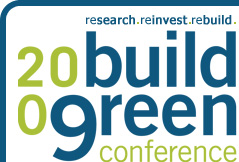Boxer-Kerry Punts On National Energy Efficiency Building Code
Yesterday, a draft of the Boxer-Kerry senate version of the Waxman-Markey climate change bill was leaked to the media. I have previously posted about the proposed National Energy Efficiency Code in the Waxman-Markey bill and in the first proposed senate bill ACELA.
Both of those proposed Energy Efficiency Codes had specific energy efficiency targets, timelines, adoption and implementation plans, and enforcement, though they differed somewhat in the specifics. Not so the Boxer-Kerry Bill. What had been pages of turgid regulatory prose in the prior two bills has been condensed to a mere page and a half--Section 174, starting on page 113 of the draft bill for those of you following at home.
The most interesting part is that all specifics have disappeared. No mandated energy efficiency savings, no specifics for implementation timeline, no enforcement, nothing. Just a mandate that the Department of Energy or "other agency head or heads as may be designated by the President"
shall promulgate regulations establishing building code energy efficiency targets...beginnning not later than January 1, 2014...
There is also a section requiring the suitable administrator to "promulgate regulations establishing national energy efficiency building codes." The entire specifics of the regulations are as follows:
Such regulations shall be sufficient to meet the national building code energy efficiency targets...in the most cost-effective manner, and may include provisions for State adoption of the national building code standards and certification of State programs.
Many have argued that the Waxman-Markey and ACELA bills went too far--making the energy efficiency requirements too high, and requiring to fast an implementation timeline. I would argue that the Boxer-Kerry draft does not go far enough--it simply does not provide the stick required to urge rapid development and adoption of a national energy efficiency code. It also leaves a lot of room for further politicking at the administrative agency level. What do you think?


 Shari focuses on energy, environmental and building code policy, representing international companies, non-profits and trade associations in their policy and communications campaigns
Shari focuses on energy, environmental and building code policy, representing international companies, non-profits and trade associations in their policy and communications campaigns

